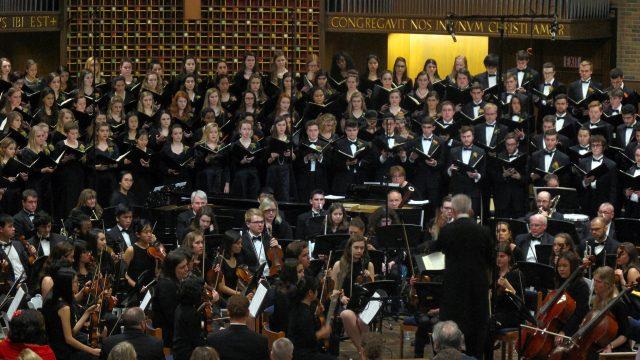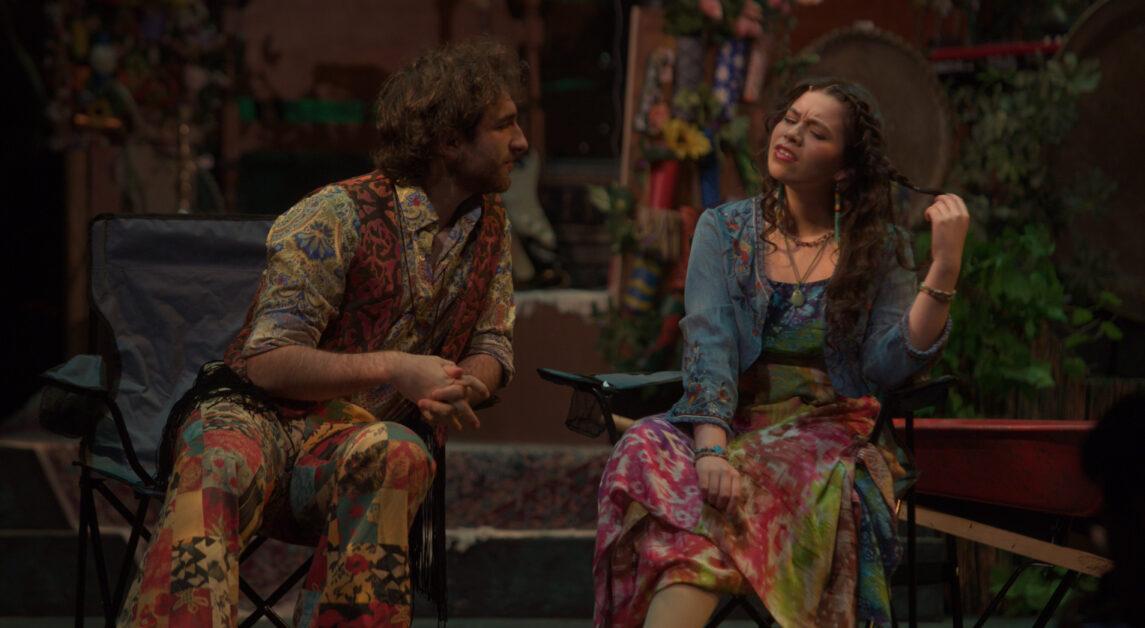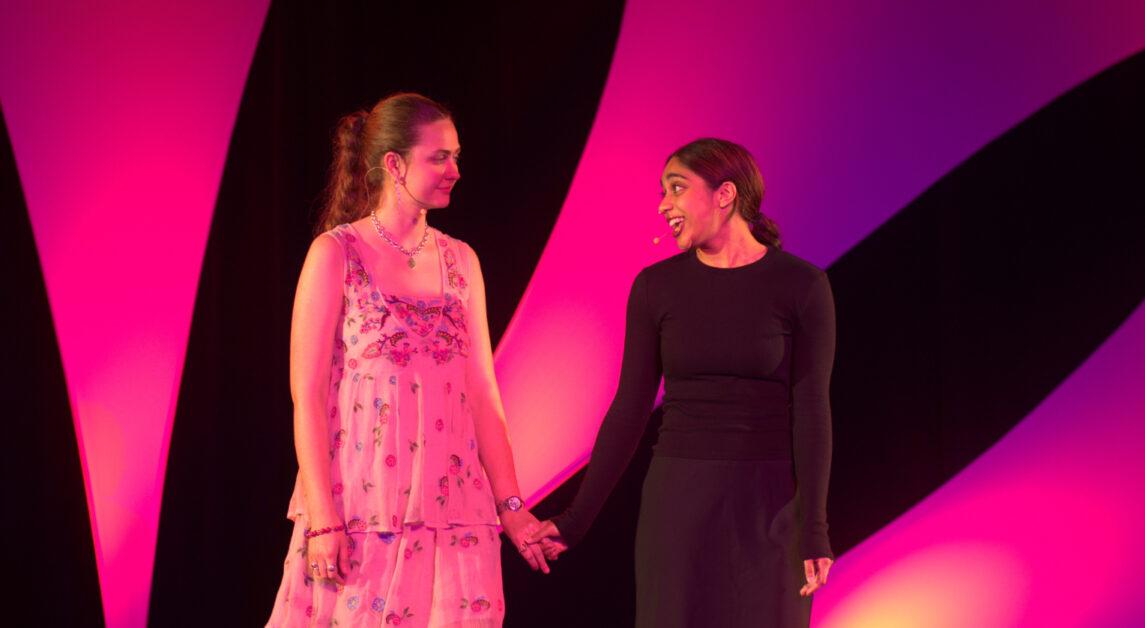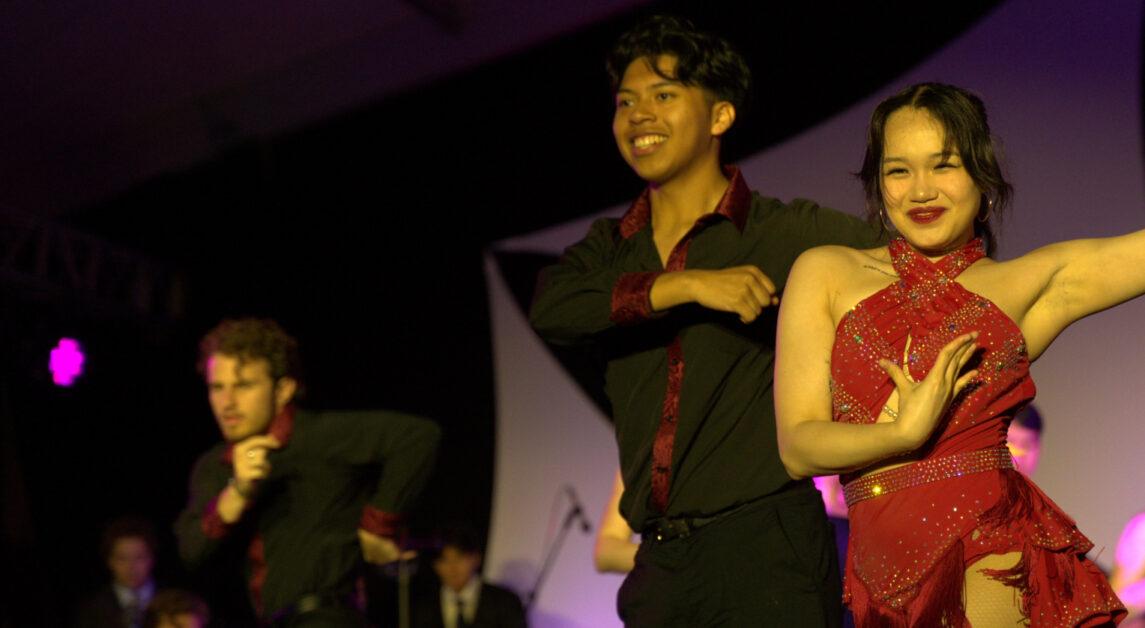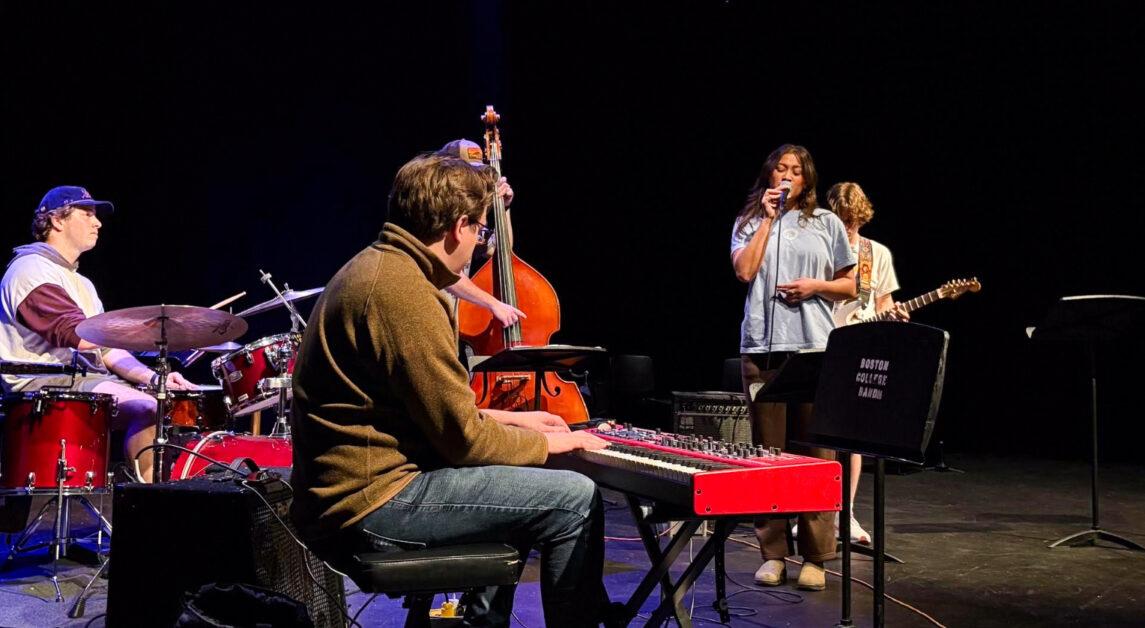Freezing temperatures have arrived on campus, with students bundling themselves in coats long stuffed under beds. This past weekend, however, offered a surrender to the newfound cold. Warmth enveloped a captivated crowd in the Trinity Chapel of Newton Campus through the only force potent enough to defeat the brisk autumn chill: uninterrupted, enthralling music.
On Friday and Saturday evening, the University Chorale of Boston College and the Boston College Symphony Orchestra collaborated with Newton Country Day School’s Cantilare to present Carmina Burana. Carl Orff composed this masterpiece in the 1930s upon discovering a book of poems that demonstrated the vitality of the human experience he aimed to capture in his music, and he did exactly that when a production of the work hit the Frankfurt Opera stage in 1937. Nearly a century later, Carmina Burana still illuminates stages around the world, and there was no exception on the stage of Trinity Chapel.
John Finney, the conductor for the choir and orchestra, opened the night with “O Fortuna,” the iconically powerful introduction to the entire work and particularly to the first of three scenes that comprise Carmina Burana. The enormity of sound immediately struck the audience and continued to hold members’ every sense, as percussion invigorated layers of strings, drums, trumpets, and trombones, accompanied by rich male and smooth female vocals from the University Chorale rang throughout the room. The melody shifted back and forth from an eruption of music to a poignant hush, simultaneously engaging listeners and fueling a rush of wonder that would carry the tone of the entire night.
Upon the inauguration of the first part of Carmina Burana called “Primo Vere,” every instrument softened into nymph-like buoyancy, coronating the oncoming spring with the particular delicacy of the triangle. Introduced by a merry xylophone scale, the baritone soloist stepped into the spotlight to voice the overwhelming benevolence of springtime, melting the audience with the depth of his range. The music then brightened into a frolic-inspiring tune, with soprano vocals perfectly mingling with the joyous bounce of the tamborine. The flute took the reins in the solely instrumental “Tanz,” a sequence that in staged productions of Carmina Burana evokes radiant dance. The angelic female voices of the Chorale then conveyed the union of nature and a plea for love in “Floret silva nobilis,” singing in Latin “The wood is in bloom everywhere, why does my love delay so long?” An anticipatory call and response between the male and female voices of the Chorale was amplified by a rotation of strength by the cymbals and drums and of softness by the flute. A mischievous pluck of the strings shifted into a summoning by trumpets, ending the first part in a storm of punchy instrumentation.
The second part displayed what the conductor equated to a night at Mary Ann’s. In “In Taberna,” a primarily masculine sound driven by the baritone soloist mastered the contrast between vivifying buzz and galvanizing reverberation, expressing the highs and lows of the tavern experience. The scene ended in a fast-paced rattling of every person who drinks, summarizing in entertaining grandeur the unity cast by a beverage.
“Cours D’Amour” reverted the mood back to splendor through flute and triangle instrumentation and introduced purity in the form of Cantilare, the all-girls choir of Newton Country Day School. The young choir fostered a bright awakening that was supported by the entrance of the soprano soloist Susan Consoli, whose satin vocals embellished lyrics about “lascivious love and modesty.”
The robust volume of Carmina Burana culminated in “Blanziflor Et Helena,” a composition of honor that showcased the seasoned skill of the entire symphony and allowed a dynamic shift into the final stage of Orff’s composition.
The collaboration of the Chorale and orchestra closed the way it began, thrilling the audience with “O Fortuna” once again. Every person within Trinity Chapel remained on the edge of his or her seat until the final note of the song, when a standing ovation welcomed the deserving musicians. Beaming faces left Newton Campus that night, mystified by the embrace of riveting vibrations and already eager to attend University Chorale and the Symphony Orchestra’s next event, “Christmas on the Heights,” in December.
Featured Image By Jake Catania / Heights Staff

